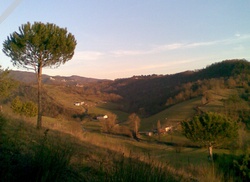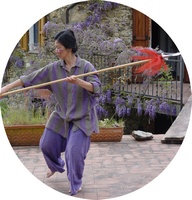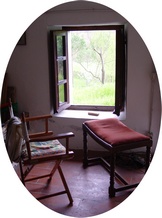
excerpt
Loopy Chansijin
The twining silk exercises are like the musical scales which pianists practise first thing in the morning.

Or in my case today, last thing before sunset. The long-tailed tits with their shallow dipping flight were swooping southwards as I came up the terraces to the deck, my old chansijin spot. The Apennines stretch like a great wall to the north, still bearing a fine ridge of snow. Spring arrives late up there. Shadows lengthen in the valley below me. I am here to mull over chansijin; this deck reminds me of the early days when I had just learnt Chansigong, and I used to practise the exercises often up on the hill.
Chan is the action of twining, something turning around itself. Si means silk. Gong means trained skill, and jin means something like power — according to Chen XiaoWang, “like power, but refined power”. Chansigong is the exercise or skill of twining silk; chansijin is the spiralling power that is led out of the chansi action.
On our first visit to Australia to study with Chen XiaoWang, we were introduced to Chansigong as an integral part of Chentaiji, together with ZhanZhuang, the standing qigong. ZhanZhuang forms the backbone of the practice, and is in different ways common to many martial arts traditions. Chansigong expresses and trains the essence of specifically Chen TaijiQuan technique. On each of our subsequent visits to Sydney, standing and twining silk were the foundation practices which we were eager to deepen.
The adjustments that Chen XiaoWang had so carefully made to my LaoJia in that first lesson in the Streatham garage, discussed in chapters 5, 6 and 7, began to make sense with the input of Chansigong instruction and practice. What begins as a bewildering array of information in the early stages of learning — for example, a palm or a wrist to be turned at a specific angle here but not there — is slowly pared down to changes deep inside the body.
The purpose of each detail specified by the teacher is to help set up a particular twining action. The student copies the appearance, before having learnt the feeling from the inside; in chapter 2, the reasons for copying as closely as possible are touched on. Over time one cultivates the delicate motions within the core which create spirals spontaneously in the integrated body. Once one learns to twine, then one simply twines, and there is no more a profusion of detail. Centre changes, and the entire body manifests it.
|
next |

